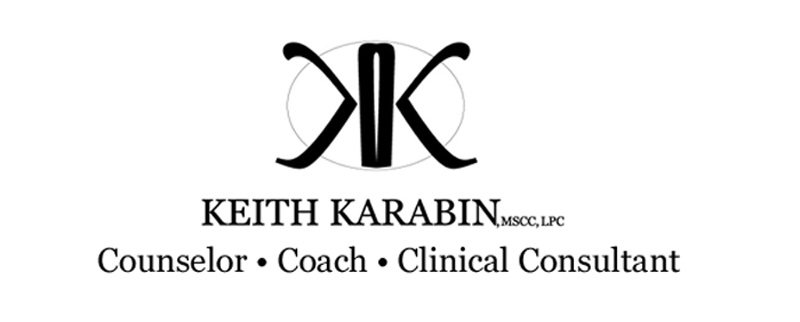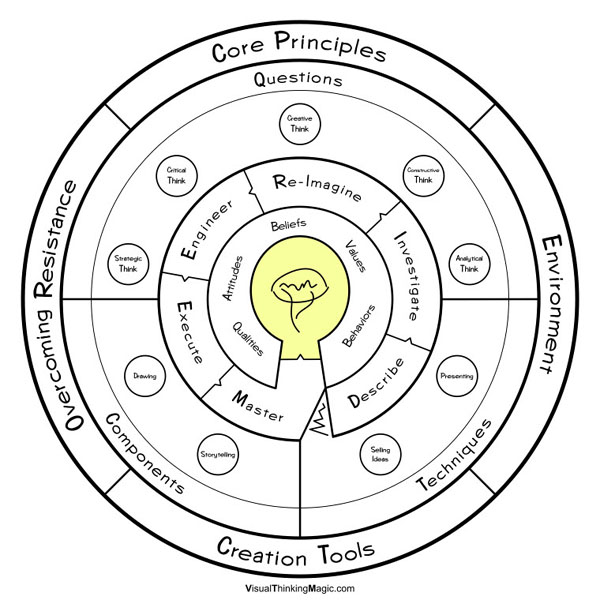The Peril of Pinterest
“[Visual Thinking is] the ability to find meaning in imagery.
It involves a set of skills ranging from simple identification
(naming what one sees) to complex interpretation on contextual,
metaphoric and philosophical levels…Objective understanding
is the premise of much of this literacy, but subjective and
affective aspects of knowing are equally important.”
-Philip Yenawine, Thoughts on Visual Literacy
(Visual Thinking Strategies, 2013)
I’m always an advocate of stretching ourselves, including the way we think. Visual Thinking is an emerging amalgam of art, science and psychology which focuses on studying how our brains absorb, organize and interpret our world with the aim of improving and harnessing that process.
But, I’ve said enough. I’m setting a crucially low word limit on this article and seeking to do more with pictures. Let’s call it my own Visual Thinking experiment. Don’t be afraid if you only see diagrams. Just look, absorb and click if you choose.
The Power of Visual Thinking
“Visual Thinking is the next evolutionary step…
Through the application of specific visual thinking
techniques and strategies you will improve your ability
to think more critically and creatively about the events
and circumstances in your life.”
– Visual Thinking Magic
…and also…
The Peril of the Visual Revolution
 Howard Gardner, professor and researcher at the Harvard Graduate School of Education, has referred to the visual/digital explosion and “kids’ use of digital media and technology ‘epochal change’ similar to the printing press, but “overnight.”
Howard Gardner, professor and researcher at the Harvard Graduate School of Education, has referred to the visual/digital explosion and “kids’ use of digital media and technology ‘epochal change’ similar to the printing press, but “overnight.”
According to CNN “By the time they’re 2 years old, more than 90% of all American children have an online history. The fact is, by middle school, our kids today are spending more time with media than with their parents or teachers…The impact of heavy media and technology use on kids’ social, emotional and cognitive development is only beginning to be studied, and the emergent results are serious.” (Clinton and Steyer, 2012)
Across the pond, The Education Department of Ireland “said cutting-edge communications technology has encouraged poor literacy and a blunt, choppy style at odds with academic rigor,” according to a study of Irish teens. They found today’s teens “unduly reliant on short sentences, simple tenses and a limited vocabulary…choosing to answer sparingly, even minimally, rather than seeing questions as invitations to explore the territory they had studied and to express the breadth and depth of their learning and understanding.” (AP, 2007)
The fear of the visual revolution that occurs when there’s a camera phone in every pocket and a connection to the Pic-opolis of the web is being realized. Studies warn “the Internet may actually be changing how our brains work. Too much hypertext and multimedia content has been linked in some kids to limited attention span, lower comprehension, poor focus, greater risk for depression and diminished long-term memory.”
Opponents of the visual revolution agree that the benefits to society are vast “But for these positive outcomes to occur, we as a society must confront the challenges endemic in our 24/7 digital world. We need legislation, educational efforts and norms that reflect 21st-century realities to maximize the opportunities and minimize the risks for our kids.” (Clinton and Steyer, 2012)
The Pinteresting Result
“My car gets 40 rods to the hogshead and that’s the way I likes it!”
-Grampa Simpson
Yes, there is data to back the idea that our emerging digital culture will turn us into some blend of Homer Simpson and the Borg, but Visual Thinking proponents believe that immersion and understanding will actually increase our potential. We may lose proper use; of semi-colons (see what I did there) and LOL at my little joke, but that we will become problem solving wiz kids. Me? I think the printing press was the best analogy. No doubt it was seen as the doom of all education and rigor of the times. Which it was, thank God.
This whole investigation came from my desire to translate this website into a more visual framework via Pinterest. We’re coming up on another year anniversary and I always like to tidy up the joint. I found some interesting things.
Let Them Speak! My first draft of the Pinterest included little synopses next to the titles of the pictures. I realized that this was reflecting my own need to “word up” the interaction with explanation, and thus my own picture related nervousness. So, I ditched the synopses and the pictures gained their voice.
Flowing, flowing… Thinking in visual pin boards about the web site’s categories forced me to take the axe to three of them, re-title another two and re-organize almost every article. The result, I hope, is a more evocative and efficient organizational system. I love that this is one of the main goals of Visual Thinking and it occurred organically, before I knew that.
It’s the gut. Yes, Visual Thinking is all about the mind-eye link. To me, it ends with the gut. The gut is what is hit by the picture. The gut is what’s drawn first, then it goes to the mind. If you wish to call your gut a soul or a spirit or a metachlorian, feel free. To me, the study of Visual Thinking is in a way a return to another level of the root of Psychology or “Soul Study.”
Click here if you’d like to see the Pinterest.
__________________________________________________
Associated Press. (2007, May 25) Ireland’s Text-mad Youth Losing Writing Abilities. USA Today. Retrieved from:http://usatoday30.usatoday.com/tech/news/2007-04-25-ireland-spells-doom_N.htm?csp=34
Clinton, C. and Steyer, J.P. (2012, May 21) Is the Internet Hurting Children? CNN. Retrieved from: http://www.cnn.com/2012/05/21/opinion/clinton-steyer-internet-kids
Visual Thinking Magic. (2011). The Visual Thinking Framework Retrieved from: http://www.visualthinkingmagic.com/framework
Visual Thinking Strategies. (2013). What is VTS? Retrieved from http://vtshome.org/what-is-vts





